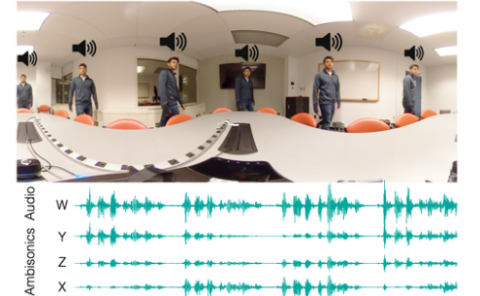Enabling Head-Tracking for Binaural Sound Reproduction Based on Bilateral Ambisonics
PubDate: November 2021
Teams: Ben-Gurion University of the Negev
Writers: Or Berebi; Boaz Rafaely; Zamir Ben-Hur; David Lou Alon
PDF: Enabling Head-Tracking for Binaural Sound Reproduction Based on Bilateral Ambisonics

Abstract
Recent progress in virtual and augmented reality technology has highlighted the need for high-quality spatial sound recording and reproduction for headphones playback. This process of high-quality binaural reproduction typically requires a high-order spatial representation of the sound field, which, in turn, demands a complex recording system and a large number of microphones. In an attempt to overcome this obstacle, a recent study presented a method, denoted Bilateral Ambisonics, that enables the rendering of high-quality binaural signals in terms of spatial perception. This is done by capturing the sound field with two low-order microphone arrays located at the assumed position of the listener’s ears. Currently, however, binaural reproduction with Bilateral Ambisonics does not support head tracking. In this paper, a mathematical model for enabling three-degrees-of-freedom head-tracking in the context of Bilateral Ambisonics is developed. The method is based on rotation and translation operations, and offers insights into bilateral head-tracking performance limits. The method is studied numerically by computer simulations.


